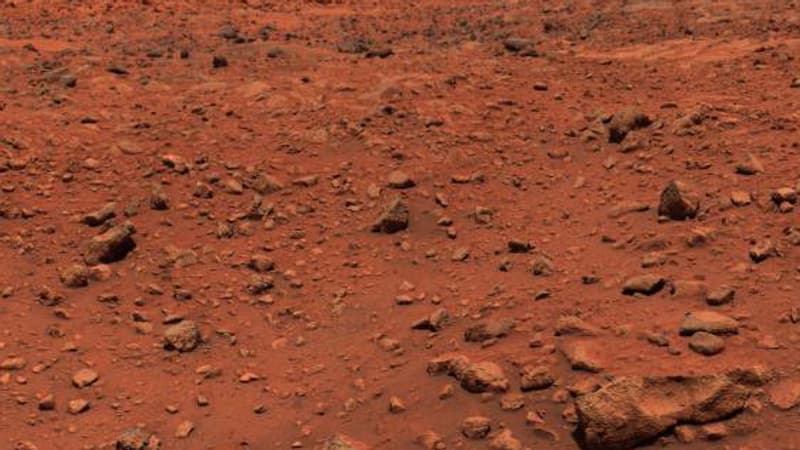US researchers announced Wednesday in a study that they had observed “the remains of a modern glacier” on the planet Mars. A key discovery for human exploration, because it “raises the possibility that shallow ice still exists in the region,” she observed.
Scientists believe in the recent presence of a glacier in the area of the planet called “Noctis Labyrinthus”, near its equator, because there they have detected clear deposits from space that show “many characteristics of a glacier”, says a statement from the scientists. researchers.
Is there still ice below the surface?
“What we found was not ice, but a salt deposit with the detailed morphological characteristics of a glacier,” said planetary scientist Pascal Lee, lead author of the study, who works for SETI (Search for Extraterrestrial Intelligence) and the Mars Institute.
This ancient glacier is about 6 kilometers long and up to 4 kilometers wide according to the authors’ measurements, “with a surface elevation ranging from +1.3 to +1.7 kilometers.”
The theory advanced by the researchers is that in this area of Mars, which has a history of volcanic activity, the volcanic materials came into contact with the ice, which formed “a hardened layer of sulfate salts.” The big question now is whether the ice has been preserved under this crust or whether it has completely disappeared.
“It is possible that all of the water ice on the glacier has now sublimated (turning from ice to gas, editor’s note). But there is also the possibility that some part is still protected at shallow depths under the salts of sulfate.” says Pascal Lee.
Possible to “get water ice out of the ground”?
The main advance of this discovery is the possibility of a new water reserve on this planet, where human exploration is expected in the coming decades.
But it also changes the vision of this planet. Until then, it was a question, in case of sending a human crew to Mars, to land them “in a place where they could extract water ice from the ground”, or rather, in the highest latitudes of the red planet. “Martian water ice is locked underground” in “regions near the poles,” NASA explains.
“But these latter environments are generally colder and more difficult for humans and robots,” explains Pascal Lee.
On Mars, “if there were equatorial places where shallow ice could be found, then we would have the best of both environments: warmer conditions for human exploration and still access to ice,” he says.
This discovery remains, of course, to be clarified, in fact, it is necessary to determine if ice really remains below the identified area and, if so, in what quantities.
Source: BFM TV


